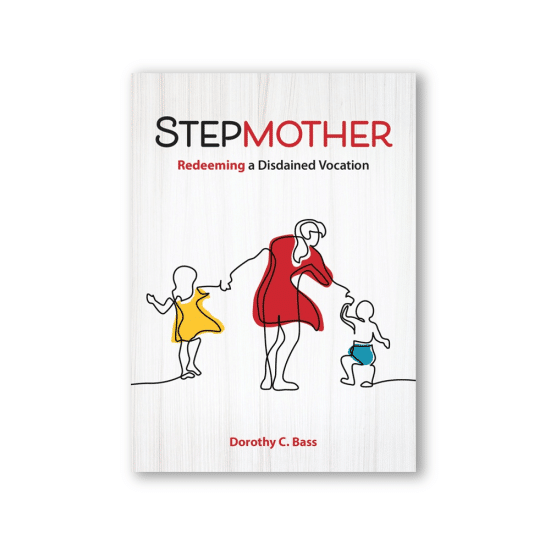

SCENES WITH MY SON: Love and Grief in the Wake of Suicide. By Robert Hubbard. Foreword by Nicholas Wolterstorff. Grand Rapids, MI: Wm. B. Eerdmans Publishing Company, 2023. Xv + 190 pages.
In some quarters of the Christian community, suicide has been deemed a mortal sin. It has even been criminalized. It also carries in many cases a stigma that is attached not only to the one who takes their life, but also to the family. Such views are unfortunate and counterproductive, especially for families. The fact is, people take their lives for many different reasons, and often it is related to mental issues, including clinical depression. If you’ve spoken with anyone who has experienced deep depression, they will tell you they’ve considered suicide. It’s likely that among those who have made that confession, are members of your family or close friends. Families who deal with mental health concerns often live with the possibility that their loved ones could at any moment take their own lives. If this does take place, it will lead to much grief and often self-incrimination. Because suicide and mental health issues often carry stigma, we tend to keep our concerns to ourselves, even within the church. Thus, the churches may not be communities of support. At least we may not be willing to entrust ourselves or our family to the possibility of being shunned by our churches. Thus, for churches, and for clergy, this is a matter of pastoral concern. It is also time for us in the church to lift the stigma so we can have conversations not only about mental health by suicide so there might be healing.

Robert D. Cornwall
So, where might we start when it comes to having these kinds of conversations? Perhaps the answer comes in the form of books such as Robert Hubbard’s Scenes with My Son. When the publisher of Hubbard’s book sent me a review copy, I let it sit on my stack, shying away from reading it. It’s not that I have embraced the stigmatization of suicide, but I knew that the story of suicide would be filled with sadness. It’s easy to shy away from reading such things, especially when we have family members who have experienced depression. Ultimately, I decided to pick up the book and read a father’s account of his beloved son’s battle with clinical depression that developed during the son’s early teens and led to his eventual suicide at age nineteen. If you, the reader, are a parent, you cannot help but read this account without viewing it through a parent’s lens. While it sat on my stack for a time, eventually I decided to read it, and what I found in Hubbard’s recounting of his family’s experience of suicide, was and is deeply moving. It’s not an easy read. If you are like me, you will be drawn into the story. You may even find yourself weeping at times. But you will also discover that Auggie, Hubbard’s beloved son, was not only troubled, but bright and talented and concerned for the welfare of others, especially animals.
Robert Hubbard, the author of Scenes with My Son, is a professor of theatre at Northwestern College in Orange City, Iowa. He is the father of three sons, the youngest of whom is the son who took his life early in his sophomore year of college. The subtitle of the book summarizes what we find as we read. What we encounter is a father’s deep love for his son and the overwhelming grief that he and the family experienced in the “wake of suicide.” As Nicholas Wolterstorff writes in his Foreword: “For a parent to undergo the death of a child by suicide is beyond terrible. Intertwined with grief there are now self-lacerating feelings of guilt and failure.” A parent is wracked with questions as to why and what could have been done. (p. ix). Nevertheless, in this book, Wolterstorff notes that “those who have experienced the death of a child by suicide will experience a spiritual and emotional balm in finding a soulmate who shares their kind of grief and guilt. Those who live with a child struggling with depression will likewise experience the balm of solidarity. And for the rest of us: we will be inspired by the example of a young life of boundless intensity and by the example of a father’s love that matched that intensity” (p. x). Wherever we find ourselves on this spectrum of wrestling with the question of suicide, we will find a story that inspires and can provide healing for those who need it. Hopefully, it will also remove the stigma we attach to suicide.
In his prologue, Hubbard tells us that he will tell us the story of a nineteen-year-old young man whose struggle with depression over nearly five years ultimately led to his death. That Hubbard could write this book is a remarkable testimony to a sense of grace that enabled him to share a story that will inspire, encourage, and hopefully bring healing to the lives of those who face the same reality. If you are like me, as you read this story at times you will find yourself in tears. He wrote this because he was encouraged to tell his story so that others might find encouragement. As for Hubbard, he writes that he “never planned to write this book until I wrote it. I never thought I could but it turns out I had to. For Auggie, and hopefully, for others.” (p. xv). Auggie (short for August) is the one whose life and death are laid out in this book.
Writing from the perspective of being both a father and a theater professor, Hubbard divides the book into three acts: Act I is titled “Beautiful Boy.” It is the story of Auggie’s early years and his intensity about everything. Act II: “The Family Monster” tells the story that begins with the diagnosis of clinical depression and high-functioning autism in his high school years. It needs to be noted that his older brother, George, the middle son, also experienced clinical depression. Clinical depression is a reality that the two sons shared with their mother, April. Only the oldest son, Charlie, did not experience clinical depression. Then Act III is titled “The Life After,” which takes us from Auggie’s death through Hubbard’s account of how the family dealt with this significant loss to their family and the larger community.
While Hubbard organizes Scenes with My Son according to these three acts, he wants us to understand that there is a story that takes place before and after Auggie’s tragic death. He does this by creating vignettes, each three to four pages in length, that take us from Auggie’s birth through the aftermath of his suicide. What we discover in the telling of this story is that this is a person, who according to his father, was an extremely sensitive young man who often found himself distanced from others. We encounter a very complicated and talented person who loved football (he treasured the full-size football he received as a Christmas present and watched with rapt attention Denver Bronco games with his father), Star Wars (he envisioned himself as a Jedi), and he loved music. The latter led to him becoming a very talented tuba player. While he grew up in a devout Christian family, he struggled with faith issues. While he eventually embraced his family’s faith, it took a long time as he struggled with many questions about God. We also read about life after Auggie’s diagnosis of clinical depression and high-functioning autism. We read about the many attempts to help him deal with his mental health concerns, including spending a great deal of time in therapy, and in-person care due to several bouts with suicidal ideations, along with trying a variety of medications. Despite every effort to overcome his depression and anxiety, nothing seemed to work. While Auggie lived a troubled life, he was much more than a troubled young man. So, as we read Hubbard’s account, the reader likely will want to root for him (at least I did). We want him to succeed in life. We want him to fulfill his potential. While we know going in that this is the story of a young man who takes his own life, as a reader we (I) desire a different ending. Of course, the parents and family knew that suicide might end Auggie’s life, but they too hoped for a different ending. So, as I read, I identified with the father, for I am a father, and rooted for Auggie because that’s what a parent does.
Reviewing a book such as Scenes with My Son is difficult. To truly understand the message of the book you must read it yourself. I will say that your heart will likely break for Auggie and his parents. You will, as Nicholas Wolterstorff writes, see the grief and the sense of self-doubt that the parents experience as they ask the question every parent of a suicide victim asks: “If only.” While there is much sadness in this story, there is also hope. Yes, as one might expect, Hubbard and his wife April struggle with their faith. He tells us about the anger that both he and his wife expressed toward God. He also addresses the attempts made by well-meaning people who sought to comfort them by offering platitudes. Throughout Auggie’s life, Hubbard had prayed mightily for his son to find inner peace and healing, yet God did not act as he hoped. Nevertheless, Hubbard takes comfort in the image of Jesus weeping for Lazarus in John 11. With this image in mind, he imagines Jesus weeping for Auggie. While he can acknowledge that good things emerged from his son’s death, he would gladly trade all the good that came to the family to have his son back. In the end, Robert Hubbard writes Scenes with My Son as an invitation to us, that we might celebrate Auggie’s intense commitment to life, for though he struggled with the urge to take his life on numerous occasions, he embraced life. He wanted to live. He wanted to contribute to making this planet a better place. So, Hubbard issues an invitation in the Epilogue, asking us to consider the question: “What would Auggie do?” To answer that question, one must read Scenes with My Son. Even as he asks that question, he notes that Auggie would find this question hilarious, and yet he writes: “As I mourn his death, I am learning what his life has to teach me.” (p. 183). Might that be true of us as well, as we read this story and ponder its implications. Though Scenes with My Son addresses the realities of suicide it is ultimately a beautiful story because it is the story of a “Beautiful Boy.” It is a book of faith, but it’s a complicated story of faith. Hubbard doesn’t provide easy answers. He remains faithful, but the questions remain. Therefore, we must commend Robert Hubbard for having the courage and compassion to write the story of a beloved son, whose life ended much too soon.
This review originally appeared on BobCornwall.com.
Robert D. Cornwall is an ordained minister in the Christian Church (Disciples of Christ). Now retired from his ministry at Central Woodward Christian Church (Disciples of Christ) of Troy, Michigan, he serves as Minister-at-Large in Troy. He holds a Ph.D. in Historical Theology from Fuller Theological Seminary and is the author of numerous books including his latest “Second Thoughts about the Second Coming: Understanding the End Times, Our Future, and Christian Hope” coauthored with Ronald J. Allen. His blog Ponderings on a Faith Journey can be found at www.bobcornwall.com.






